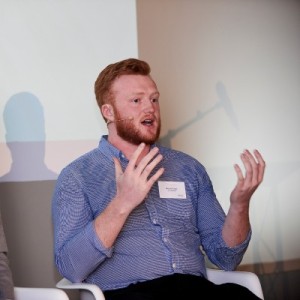- Video Library
- Michael Phillips Presents Vena Medical at LSI USA ‘23
Michael Phillips Presents Vena Medical at LSI USA ‘23

Michael Phillips
Michael graduated from University of Waterloo with a Bachelor of Applied Science (B.A.Sc.) focused in Mechanical Engineering with an Entrepreneurship Option. He co-founded Vena Medical during the final year of his undergraduate degree and went full-time immediately after graduating. He and his co-founder, Phillip Cooper, attended TMCx Accelerator and Y Combinator in the year following. They are both published authors in the Journal of Neuro-Interventional Surgery and the American Journal of Neuroradiology, Inventors on two pending patents and winners of numerous awards related to business and entrepreneurship.
Michael Phillips
Michael graduated from University of Waterloo with a Bachelor of Applied Science (B.A.Sc.) focused in Mechanical Engineering with an Entrepreneurship Option. He co-founded Vena Medical during the final year of his undergraduate degree and went full-time immediately after graduating. He and his co-founder, Phillip Cooper, attended TMCx Accelerator and Y Combinator in the year following. They are both published authors in the Journal of Neuro-Interventional Surgery and the American Journal of Neuroradiology, Inventors on two pending patents and winners of numerous awards related to business and entrepreneurship.

17011 Beach Blvd, Suite 500 Huntington Beach, CA 92647
714-847-3540© 2025 Life Science Intelligence, Inc., All Rights Reserved. | Privacy Policy







